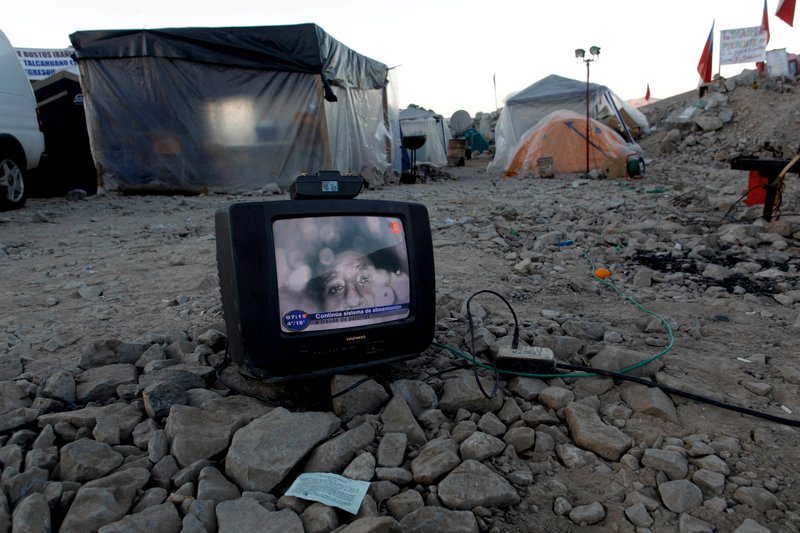COPIAPO, Chile – While 33 men trapped in a mine cling to hope that they’ll get out alive, the company that put them there says it can’t afford to pay their salaries and may go bankrupt.
The San Esteban mining company is in such bad shape that it has neither the equipment nor the money to rescue the men; Chile’s state-owned mining company is digging the escape tunnel, which will cost about $1.7 million.
In the days after the Aug. 5 tunnel collapse at the San Jose gold and copper mine, company leaders defended their safety measures, but have since gone mum and attempts to reach anyone at San Esteban were not successful.
How such a financially unstable business was allowed to operate is a question that is putting one of Chile’s top industries under the microscope, exposing a dark underside of questionable regulation that may ultimately reflect more on government priorities than one rogue company.
Sen. Baldo Prokurica, who is on the Senate mining committee, says he has been pushing Congress for years to increase the number of inspectors for the state regulatory agency, Sernageomin. It has only 18, he said, which makes regulating the country’s several hundred mines a daunting task.
“The government has abandoned (the regulator),” Prokurica said in an interview. “If you look at the laws, they are good. We need to enforce the laws, not make more laws or increase fines.”
President Sebastian Pinera has fired top regulators and created a commission to investigate the accident and the agency. Since the collapse, the agency has shut down at least 18 small mines for safety violations, a possible sign that lax safety measures are open secrets at many mines.
On Thursday, the first of many expected lawsuits against San Esteban and the government were filed, and a judge ordered the retention of $1.8 million of company money in anticipation of the suits.
Despite advances in technology and increased emphasis on safety — at least publicly — mining remains a dangerous profession.
Since 2000, about 34 people have died every year on average in mining accidents in Chile, with a high of 43 in 2008, according to a review of Sernageomin data.
The agency declined interview requests, citing the investigation and internal overhaul that Pinera ordered.
Changing the industry will not be easy.
Chile’s stable and regional powerhouse economy is in large part built around exports of copper, gold and other minerals. Copper alone accounts for roughly a third of government revenue, and the state has a policy of shoring up national reserves during periods of high copper prices.
Mining also offers many of the country’s poor the best shot at a middle-class life.
Copy the Story Link
Send questions/comments to the editors.



Success. Please wait for the page to reload. If the page does not reload within 5 seconds, please refresh the page.
Enter your email and password to access comments.
Hi, to comment on stories you must . This profile is in addition to your subscription and website login.
Already have a commenting profile? .
Invalid username/password.
Please check your email to confirm and complete your registration.
Only subscribers are eligible to post comments. Please subscribe or login first for digital access. Here’s why.
Use the form below to reset your password. When you've submitted your account email, we will send an email with a reset code.